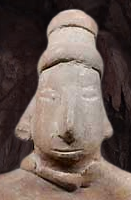|
- Getting Started
- Help
- Master Lists
- Useful Links
- Features
OOC Info [Wind Reach] Community Development and Suggestions
For all your development whims
(This is a thread from Mizahar's fantasy role playing forum. Why don't you register today? This message is not shown when you are logged in. Come roleplay with us, it's fun!)
19 posts • Page 2 of 2 • 1, 2
- Izuldir
- Player
- Posts: 12
- Words: 8690
- Joined roleplay: June 19th, 2013, 1:15 pm
- Race: Isur
- Character sheet
- Storyteller secrets
[Wind Reach] Community Development and Suggestions
"Speech in an italic font is spoken in Nari."
"Speech in unmodified font is spoken in Common."
"Speech in bold font is NPC speech."
Nonspeech text in italic font is internal dialog.
"Speech in unmodified font is spoken in Common."
"Speech in bold font is NPC speech."
Nonspeech text in italic font is internal dialog.
-

Marrin - Slave to an Unknown Destiny
- Posts: 103
- Words: 94562
- Joined roleplay: October 16th, 2013, 3:45 am
- Location: Wind Reach
- Race: Human, Mixed
- Character sheet
- Storyteller secrets
- Journal
- Plotnotes
[Wind Reach] Community Development and Suggestions
"Speech in an italic font is spoken in Nari."
"Speech in unmodified font is spoken in Common."
"Speech in bold font is NPC speech."
Nonspeech text in italic font is internal dialog.
"Speech in unmodified font is spoken in Common."
"Speech in bold font is NPC speech."
Nonspeech text in italic font is internal dialog.
-

Marrin - Slave to an Unknown Destiny
- Posts: 103
- Words: 94562
- Joined roleplay: October 16th, 2013, 3:45 am
- Location: Wind Reach
- Race: Human, Mixed
- Character sheet
- Storyteller secrets
- Journal
- Plotnotes
-

Drusilla - New mother
- Posts: 687
- Words: 272571
- Joined roleplay: August 14th, 2010, 6:55 am
- Race: Symenestra
- Character sheet
- Storyteller secrets
- Scrapbook
- Medals: 2
-


[Wind Reach] Community Development and Suggestions
|
-

Aranta - Player
- Posts: 162
- Words: 64715
- Joined roleplay: November 18th, 2013, 7:30 pm
- Race: Zith
- Character sheet
- Storyteller secrets
-

Zhol - Carry on, wayward son.
- Posts: 763
- Words: 710796
- Joined roleplay: July 10th, 2014, 4:45 am
- Location: Lhavit
- Race: Human
- Character sheet
- Storyteller secrets
- Scrapbook
- Journal
- Plotnotes
- Medals: 3
-


-

[Wind Reach] Community Development and Suggestions
4 out of 5 active threads


-

Azira - Prodigal Daughter
- Posts: 923
- Words: 907811
- Joined roleplay: August 31st, 2013, 3:43 pm
- Location: Wind Reach
- Race: Human, Inarta
- Character sheet
- Storyteller secrets
- Scrapbook
- Journal
- Plotnotes
- Medals: 3
-


-

[Wind Reach] Community Development and Suggestions
Common | Nari
Common | Nari
Common | Nari
-

Bricken - a boy of clay and wonder
- Posts: 26
- Words: 22297
- Joined roleplay: August 14th, 2019, 2:32 am
- Race: Pycon
- Character sheet
- Plotnotes
19 posts • Page 2 of 2 • 1, 2
Who is online
Users browsing this forum: No registered users and 0 guests



